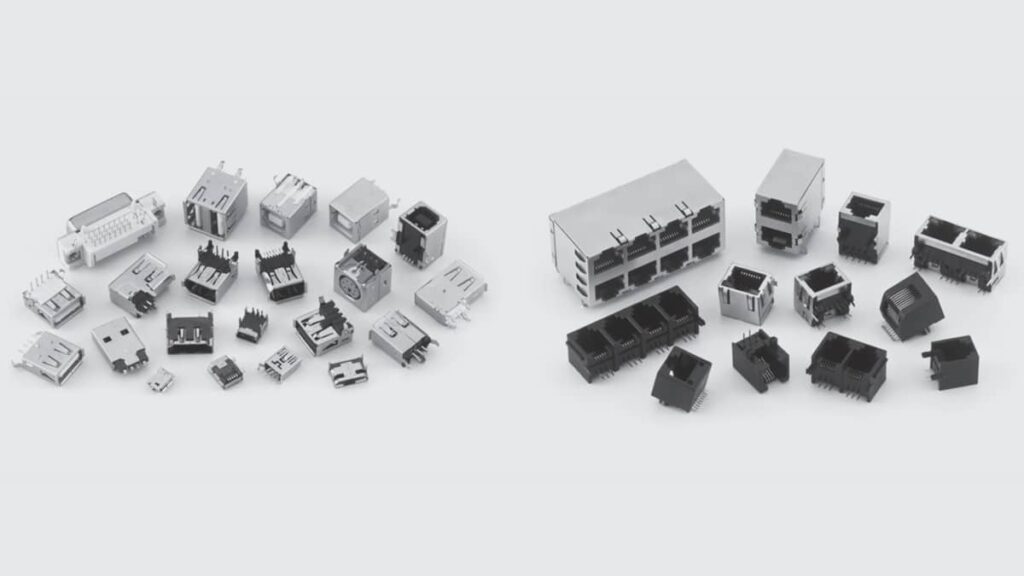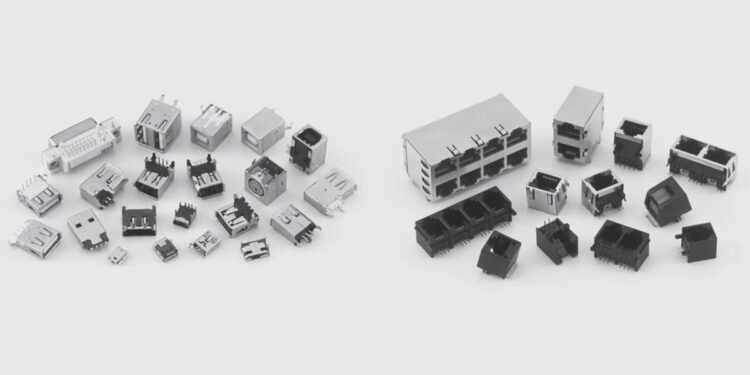Coming from the computer market, all these connectors can now be found everywhere, specially in our living room where any LCD flat screen is now equipped with USB, HDMI and even sometime with modular jacks.
They can also be found in their miniaturized version, in digital camera (mini USB) or mobile phone (micro USB). These connectors are used to allow communication between different external modules. They exist in different soldering technologies (TH or SMT) depending on the final applications.
Here below (Figure 2.129) are some example of the most popular I/O connectors.

Source:
Wurth elektronik































